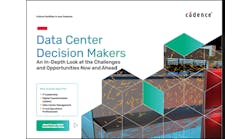A new white paper from Stream Data Centers outlines best practices for disaster planning in mission-critical environments, such as data centers.
Get the full report.
Whether it be an earthquake, tornado, cyberattack, or a black out, natural and man-made disasters can have a catastrophic impact on businesses, especially data centers where 100% uptime is expected. According to Stream Data Centers, “a fail-safe continuity plan can save the life of your business.”
To prepare for disaster, the paper recommends you first conduct a risk assessment to identify the biggest threats your organization could face. Look at recent disasters and how companies similar to your fared because “learning from others’ mistakes is much less painful than learning from your own.” The report goes on to say that “once you’ve identified your greatest threats, try to rate each event according to how likely it is to occur, how it would impact normal operations, the possible extent of disruption and damage, and the economic impact of the disaster.”
They also encourage you to look at not just the primary impacts, such as flooding in the aftermath of a hurricane. Secondary impacts, which can be longer-lasting, must be addressed in any comprehensive disaster plan. “During Hurricane Harvey, for example, the primary impacts to operations were flooding, structural damage and power failure. Secondary impacts were facility accessibility, the availability of gasoline for transportation, and how to house and feed essential data center personnel and their families.
“Once you have created a plan that addresses how to deal with every likely disaster, make sure each person involved in the process has a hard copy of the plan, complete with contact information for the entire team.” Stream Data Centers, “Are You Prepared? Why You Need a Solid Strategy for Mission-Critical Disaster Planning”
One of the keys in disaster planning for business continuity, according to the paper, is having a team that’s in charge of “proactively mitigating risks.” The paper provides best practices for that team to follow when drafting their disaster plan. Key areas to consider are prevention, identification, response, and restoration. The report also discusses how critical it is for a data center’s clients “to work together and integrate their business continuity plans.”
Stream Data Centers also note in their paper that practicing the disaster plan is as important as fire drills are. “No matter how thoroughly you have planned, gaps can show up when the written protocols collide with real-world challenges,” they say. “The goal is to make the procedure as seamless as day-to-day business, with team members shifting to disaster recovery mode smoothly.”
Download the full report to learn more about how to best prepare a comprehensive disaster plan for your mission-critical operation.

Kathy Hitchens
Kathy Hitchens has been writing professionally for more than 30 years. She focuses on the renewable energy, electric vehicle, utility, data center, and financial services sectors. Kathy has a BFA from the University of Arizona and a MBA from the University of Denver.





